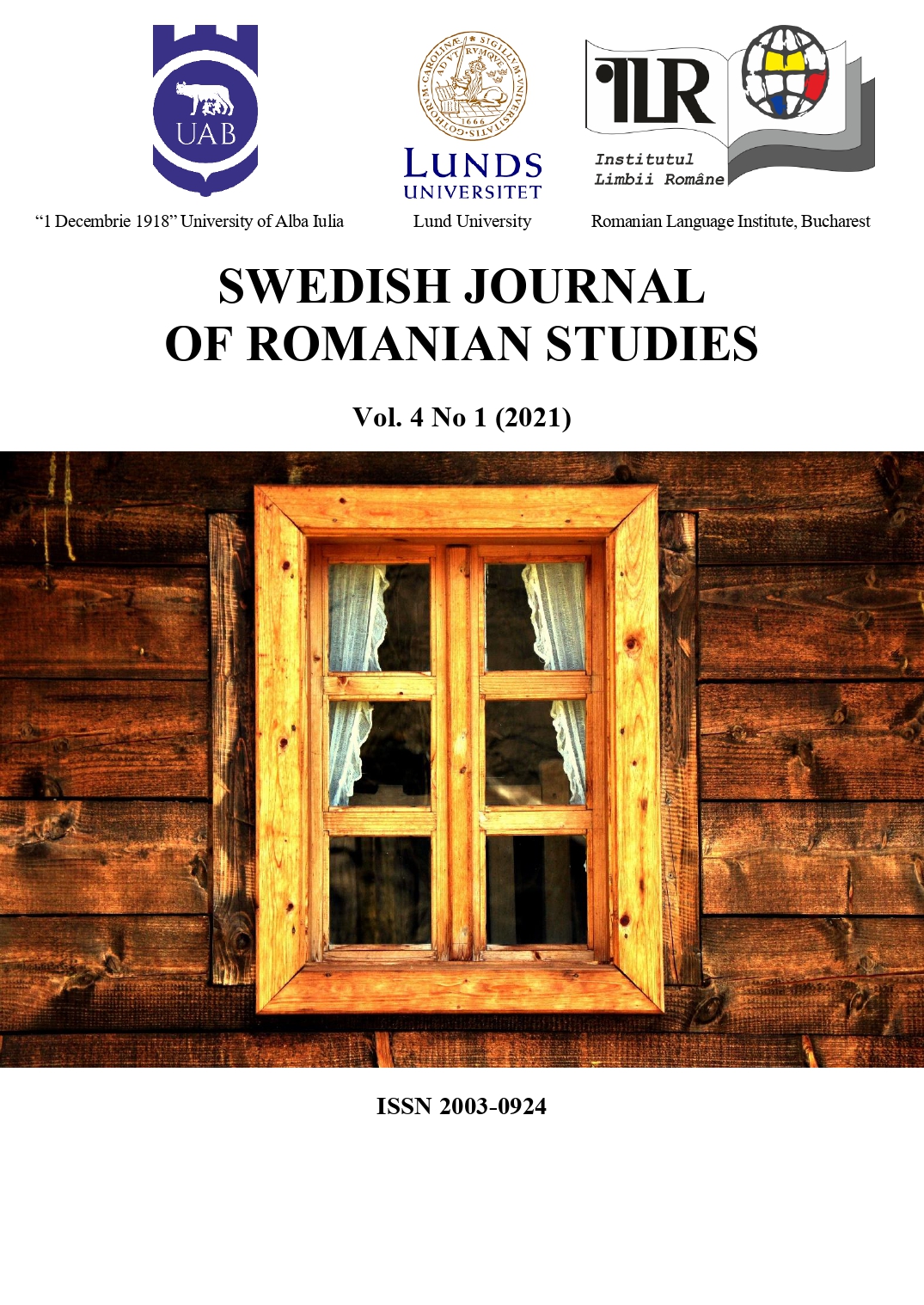Le musée de niche. Nouvel exploit dans la muséographie
The small museum. New exploitation in museography
DOI:
https://doi.org/10.35824/sjrs.v4i1.22109Keywords:
anthropology museum art cultural studiesAbstract
In all the complexity of the museum study, there is a slight border that deserves all the attention of the researchers: the one of the niche museums. This work starts from the idea according to which the museum becomes a symbol of cultural practice in the contemporary era. In addition to the successful museums that are being built and built in the city, there is a new tendency to transform some spaces into small museums. These, in full process of heritage building, can highlight a series of features and characteristics of a society. The research of the niche museum starts from Ulf Hannerz, who says in his study that anthropology must renew its limits, it must take into account urban life. Researchers should not focus only on rural areas, in small, homogeneous communities, especially as they are outside Western societies Urban anthropology must be based on a range of social and cultural phenomena that will rarely be found in rural areas and which must be analyzed in the light of the diversity of human societies in general, says Ulf Hannerz, like the diversity of museums. From the chocolate museum, the lace museum, the cake museum, the cheese museum or the flower museum, all these culturally-rendered spaces are meant to anonymously remove some objects or crafts that are characteristic of a particular group and which subsequently become part of the immaterial cultural heritage. The Dictionary of Ethnology and Anthropology defines the study of anthropology regarding museography as a necessity inherent in the advancement of ethnography. Researchers such as Robert Park, Ulf Hannerz, Clifford Geertz, André Malraux or Chiara Bortolotto have studied the relationship of the museum with the city, thus implicitly with society. The conclusions they draw have the following aspect in common: the museum has the intrinsic ability to model and structure the immediate society.
References
Bortolotto, C. (2011). Le trouble du patrimoine culturel immatériel/ The problem with intangible cultural heritage. In Le patrimoine culturel immatériel, Paris, Éditions de la Maison des sciences de l`homme. https://doi.org/10.4000/gradhiva.2412.
Bourdieu, P. (2007). Regulile artei/The rules of art. Bucureşti: Editions ART.
Deliège, R. (2007). O istorie a antropologiei/ A history of anthropology. Bucureşti: Cartier.
Guilles-Escuret, G. (1996). L`anthropology, à quoi bon? Chercheurs, techniciens, intellectuels et militants/ Anthropology, for what is good ? Researchers, technicians, intellectuals and militants. Paris : L`Harmattan.
Hedeşan, O. (2008). The Mărţişor. Or Reinventing a Tradition. Baia Mare : Editura Universităţii de Nord
Heinich, N. (2009). La fabrique du patrimoine – De la cathédrale à la petite cuillère. Paris: Maison des Sciences de l`homme
Kent, H. (1913). The Small Museum. In Art and Progress, 4(10), 1048.
Laplantine, F. (2000). Descrierea etnografică/ Ethnographic description. Iaşi : Polirom.
Matei Călinescu, M. (2017). Cinci feţe ale modernităţii/ Five faces of modernism. Iaşi: Polirom.
Mihăilescu, V. (2009). Antropologie. Cinci introduceri/ Anthropology. Five introductions. Iaşi: Polirom.
Mills, G. (1955). Social Anthropology and the Art Museum. In American Anthropologist, New Series, 57(5), 1004-1005. https://doi.org/10.1525/aa.1955.57.5.02a00070
Nicolescu, C. (1979). Muzeologie generală/ General museography. Bucureşti: Editura Didactică şi Pedagogică
Niţulescu, V. et.alt. (2008). Repertoriul naţional de patrimoniu cultural imaterial/ National repertory of intangible cultural heritage. In CIMEC, Volume I, Bucureşti.
Ressources électroniques :
ICOM. (2017). The challenge of revising the museum definition, disponible à l'adresse suivante: https://icom.museum/en/news/the-challenge-of-revising-the-museum-definition/, accédé le 19.10.2020
Standing Committee for Museum Definition, Prospects and Potentials. (2019). In ICOM Conference, disponible à l'adresse suivante: https://icom.museum/wp-content/uploads/2019/01/MDPP-report-and-recommendations-adopted-by-the-ICOM-EB-December-2018_EN-2.pdf, accédé le 19.10.2020
ICOM. (2019). ICOM announces the alternative museum definition that will be subject to a vote, disponible à l'adresse suivante: https://icom.museum/en/news/icom-announces-the-alternative-museum-definition-that-will-be-subject-to-a vote/?fbclid=IwAR16jWqlWoYLWv82Rm2m89u_N-9ewhezDUems1LZa1caWxfl6wr_07e_MRQ, accédé le 19.10.2020
Instituto Nazionale di Statistica. (2013). Museums, archeological areas and monuments in Italy, disponible à l'adresse suivante: https://www.istat.it/en/archive/106183, accédé le 19.10.2020
Ministère de la Culture, Appellation « Musée de France », disponible à l'adresse suivante: http://www.les-musees-de-france.fr/, accédé le 19.10.2020
Labut C. (2013). Neuf françaises sur dix se parfument, disponible à l`adresse suivante : https://www.lexpress.fr/styles/parfums/neuf-francaises-sur-dix-se-parfument_1261781.htm, accédé le 19.10.2020
Le Figaro (2019). Avec 10,2 millions de visiteurs, le Louvre a battu un nouveau record de fréquentation en 2018, disponible à l'adresse suivante : http://www.lefigaro.fr/culture/2019/01/03/03004-20190103ARTFIG00071-avec-102-millions-de-visiteurs-le-louvre-a-battu-un-nouveau-record-de-frequentation-en-2018.php, accédé le 19.10.2020
Loi 2002/5 du 04.01.2002, disponible à l'adresse suivante:https://www.legifrance.gouv.fr/affichTexte.do?cidTexte=JORFTEXT000000769536&categorieLien=id, accédé le 19.10.2020
Loi des Musées de l'Italie, disponible à l'adresse suivante : http://www.beniculturali.it/mibac/export/MiBAC/sito MiBAC/Contenuti/Ministero/visualizza_asset.html_1947521712.html, accédé le 19.10.2020
Musée d`Auschwitz-Birkenau (2018). 2,1 million visitors at the Memorial, disponible à l'adresse suivante: http://auschwitz.org/en/museum/news/2-1-million-visitors-at-the-memorial-in-2017,1292.html, accédé le 19.10.2020
Panko. R. (2018). The popularity of Google Maps: Trends in Navigation Apps, disponible à l'adresse suivante: https://themanifest.com/app-development/popularity-google-maps-trends-navigation-apps-2018, accédé le 19.10.2020
Popper. B. (2017). Google announces over 2 billion monthly active devices on Android, disponible à l'adresse suivante : https://www.theverge.com/2017/5/17/15654454/android-reaches-2-billion-monthly-active-users, accédé le 19.10.2020
UNESCO, What is Intangible Cultural Heritage?, disponible à l'adresse suivante: https://ich.unesco.org/en/what-is-intangible-heritage-00003 accédé le 19.10.2020
Downloads
Published
How to Cite
Issue
Section
License
Copyright (c) 2021 Madalina Iacob

This work is licensed under a Creative Commons Attribution-NonCommercial 4.0 International License.
Authors who publish with this journal agree to the following terms:
a. Authors retain copyright and grant the journal right of first publication with the work simultaneously licensed under a Creative Commons Attribution-NonCommercial 4.0 International License that allows others to share the work with an acknowledgement of the work's authorship and initial publication in this journal.
b. Authors are able to enter into separate, additional contractual arrangements for the non-exclusive distribution of the journal's published version of the work (e.g., post it to an institutional repository or publish it in a book), with an acknowledgement of its initial publication in this journal.
c. Authors are permitted and encouraged to post their work online (e.g., in institutional repositories or on their website) prior to and during the submission process, as it can lead to productive exchanges, as well as earlier and greater citation of published work (See The Effect of Open Access).

